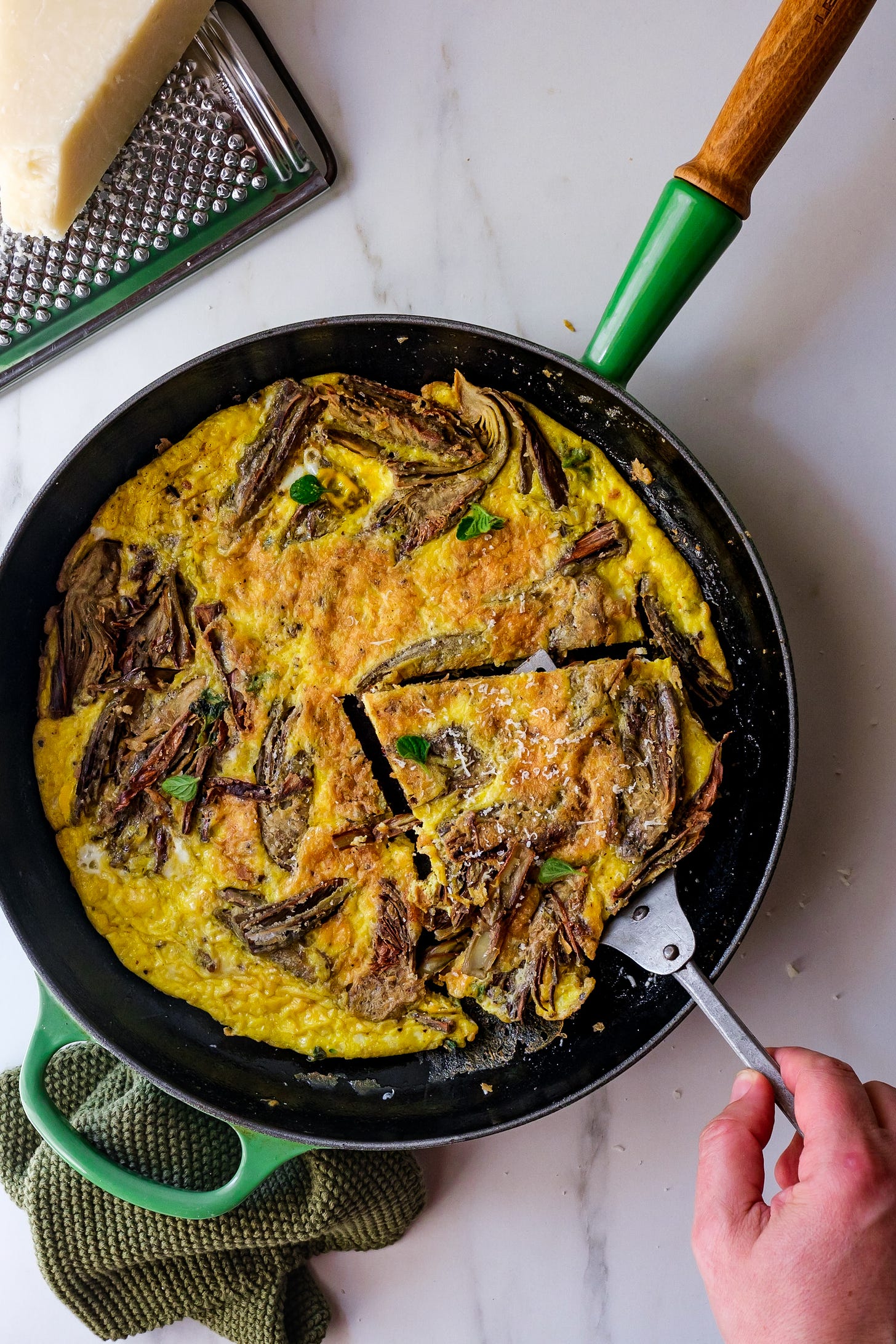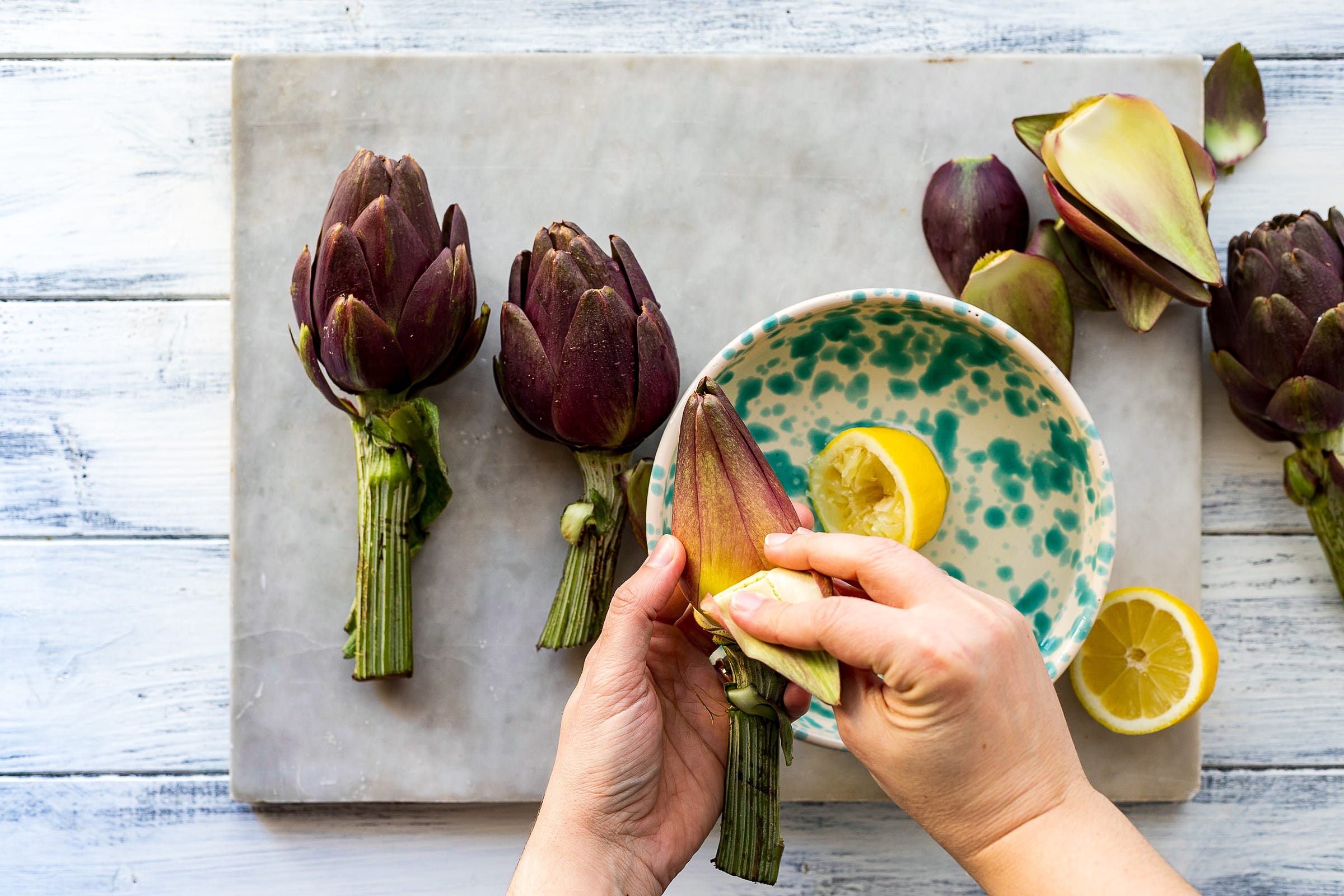Artichoke frittata
It is fast and rustic, layered with flavours and textures, thanks to the crisp artichoke wedges that remain crunchy into the custardy frittata.
This is an exclusive recipe for the subscribers. It is part of a serialized Tuscan cookbook that you will receive over the course of one year, a collection of tested classic Tuscan recipes to add to your cooking repertoire. Learn more about the I Love Toscana project here and find all the recipes here. You can upgrade and get access to this, as well as all our monthly cook-along and live talks, on the link above.
When I asked my grandmother if artichokes had always been a part of her cooking repertoire, her answer was simple.
“Artichokes? Artichokes are the first thing you plant when starting a vegetable garden!” Everyone in the countryside had a carciofaia, a patch of land where the large artichokes would grow in majestic bushes, their leaves a dusty green.
I remember my grandmother walking into her artichoke patch with an old knife, almost disappearing between the huge bushes, and coming back with a few, precious artichokes in her hands, ready to trim and dip them in good olive oil with salt, or cook them into a frittata.
How to clean an artichoke
Don’t be scared by the amount of leaves you’re going to discard.
You might be used to boiling artichokes whole, and eating them by dipping the leaves one by one in butter or mayonnaise, scraping the edible parts off with your teeth. In Italy, we instead prefer to clean artichokes before eating them, therefore making it easier to appreciate and enjoy them in a dish, either cooked or raw.
You can treat cleaning the artichokes as a form of kitchen meditation: while your hands are occupied with the mechanical action, your mind is free to wander.
Start with a large bowl of acidulated water—that simply means squeezing the juice of a lemon into it. This will prevent the artichokes from browning, as they are rich in iron and oxidize quickly once cut. Leave the two lemon halves in the water to use to rub the cleaned artichokes, and your hands, too.
First, remove the outer leaves, until you reach the pale softer ones. With a sharp knife, remove the spiky tip of the artichoke, then cut it where the base meets the stalk. Set the stalk aside. Rub the artichoke heart all over with a lemon half and plunge it into the bowl of acidulated water. Keep going until you finish all the artichokes.
Then, tackle the stalks. Peel them until you reach the whiter, softer part inside, rub them with half a lemon to prevent them from browning, and add them into the bowl of water, too. Artichoke stalks are flavorful, perfect to use in a risotto or pasta sauce, or stewed along with the hearts.
If you’re serving your artichokes raw, cut them in half and use a small spoon to scoop out the furry choke, if needed. If they are fresh, you probably won’t need this step.
Once the artichokes are clean, you can use them in many recipes, raw and cooked.





